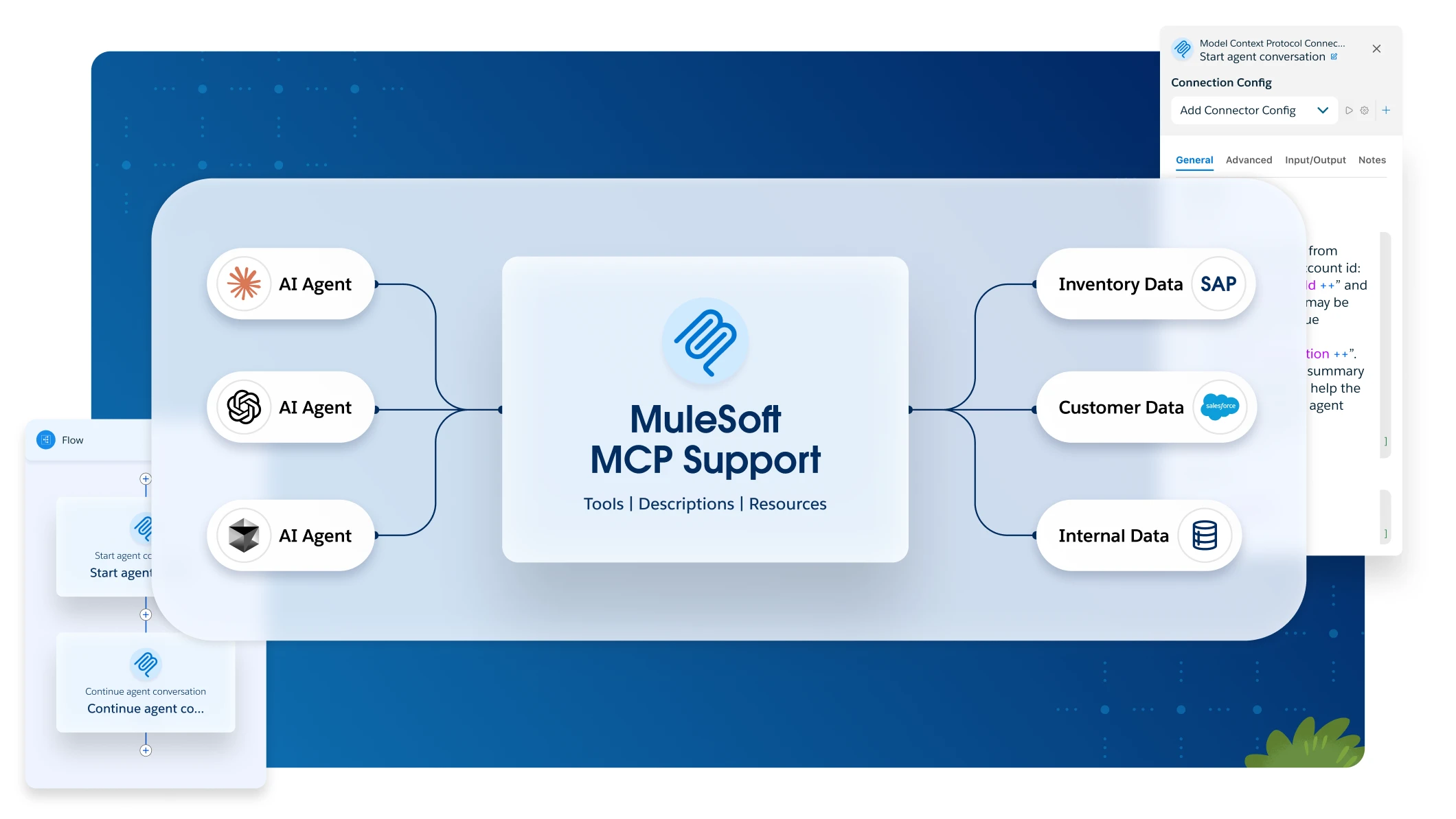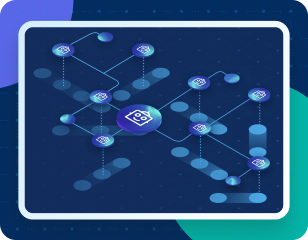One of the strengths of MuleSoft’s CloudHub platform is its robust environment management, which enables enterprises to deploy APIs and integrations across multiple swimlanes – such as development, QA, staging, and production. However, despite the flexibility and scalability offered, many developers and DevOps teams face a persistent visibility challenge: the lack of a native mechanism to compare application versions across swimlanes.
We’ll discuss finding a solution using CloudHub APIs along with guidance on building a lightweight web application that solves this limitation – empowering teams with better deployment intelligence.
The problem: Version drift without visibility
In most CI/CD practices, version control and consistency across environments are essential. Yet, CloudHub currently does not provide out-of-the-box tooling for comparing application versions deployed across multiple swimlanes (environments).
This creates several challenges:
- Manual effort: Teams often need to manually check application versions in each environment via the Anypoint Platform UI.
- Version drift: Without quick visibility, older or unintended versions might linger in a non-production swimlane, leading to misaligned testing or customer issues.
- Audit difficulty: During audits or troubleshooting, teams must scramble to determine what version was deployed where and when.
- Major releases: In case of major releases involving many applications, it becomes tedious to compare all the application versions in each swimlane against another swimlane.
Limited deployment visibility
Let’s consider a typical multi-swimlane deployment scenario in MuleSoft:
- Development hosts version 1.2.0 of an API.
- QA is accidentally still running 1.1.8.
- Production has the correct 1.2.0, but it’s on a different Mule runtime (4.5.1 vs. 4.4.0).
Because CloudHub doesn’t provide cross-swimlane version comparison natively, the following problems emerge:
- Manual comparison: Checking environments one by one is time-consuming.
- Environment drift: Older or inconsistent versions stay undetected.
- Deployment risk: Inconsistent runtimes can cause platform-specific behavior.
- Status oversight: Applications may be Stopped, Deploying, or Failed without anyone noticing.
- Reactive operations : Issues are often detected at later stages leading to reactive actions.
Solution: A centralized comparison dashboard using CloudHub APIs
To solve this problem, we propose a custom web app that utilizes MuleSoft’s CloudHub and Anypoint APIs to create a real-time dashboard for version, runtime, and status comparisons across all environments, with the following key capabilities:
| Feature | Description |
|---|---|
| Application version comparison | Fetch .jar or .zip deployment names or metadata to compare versions |
| Mule runtime comparison | Retrieve and compare Mule runtime versions (e.g., 4.4.0 vs 4.5.1) |
| Status monitoring | Detect if the app is Started, Stopped, or Failed |
| Deployment time analysis | Check when each version was last deployed |
| Export and alert | Export mismatches or send alerts for inconsistency |
Leveraging MuleSoft’s platform APIs
The solution’s technical backbone involves a systematic API interaction:
- Authentication: A POST request to https://anypoint.mulesoft.com/accounts/login obtains an access_token for subsequent authorized calls.
- Environment discovery: A GET request to https://anypoint.mulesoft.com/accounts/api/me in the Access Management API that retrieves the organization. With the Authorization token and Organization ID, you can now retrieve the Environment ID. Use the `/api/organizations/{ORG_ID}/environments endpoint in the Access Management API, replacing {ORG_ID} with your actual Organization ID. The response will be a list of environments, and you can identify the specific Environment ID you need.
- Application data retrieval: For each environment, a GET request to https://anypoint.mulesoft.com/hybrid/api/v1/applications (with Authorization and X-ANYPNT-ENV-ID headers) fetches detailed application metadata, including name, fileName, runtimeVersion, status, and lastUpdateTime.
- Normalization and comparison: A backend component collects this raw data, normalizes it, and structures it for easy comparison (e.g., mapping “App Name,” “Environment,” “App Version,” “Runtime,” “Status,” “Last Updated”). Mismatches are then identified.
The backend collects this metadata across all environments, and maps each app’s:
| App Name | Environment | App Version | Runtime | Status | Last Updated |
| orders-api | Dev | 1.2.0 | 4.5.1 | STARTED | 2025-04-20 |
| orders-api | QA | 1.1.8 | 4.4.0 | STARTED | 2025-04-10 |
| orders-api | Prod | 1.2.0 | 4.5.1 | STARTED | 2025-04-25 |
UI mockup dashboard view
A sample interface might look like this:

Mismatches are highlighted for easy detection.
Compare apps across environments
We want to normalize this data to show the same application across different environments, with easy visual cues to detect mismatches.
Implementation: Dynamic dashboard with dropdown filter
Let’s bring this concept to life with a dynamic HTML + JavaScript example that lets users filter the comparison by:
- App version
- Runtime
- Status
- Last updated
You can explore and download the React.js/Node.js example on GitHub: CloudHub Version Comparison Dashboard.
Sample HTML and JavaScript code snippet
<!DOCTYPE html>
<html lang="en">
<head>
<meta charset="UTF-8">
<title>CloudHub App Comparison</title>
<style>
table {
width: 100%;
border-collapse: collapse;
margin-top: 1em;
}
th, td {
border: 1px solid #ccc;
padding: 8px;
text-align: center;
}
.mismatch {
background-color: #fff3cd;
color: #856404;
font-weight: bold;
}
select {
margin-top: 1em;
padding: 0.5em;
}
</style>
</head>
<body>
<h2>🔍 CloudHub Application Metadata Comparison</h2>
<label for="compareField">Compare by: </label>
<select id="compareField">
<option value="App Version">App Version</option>
<option value="Runtime">Runtime</option>
<option value="Status">Status</option>
<option value="Last Updated">Last Updated</option>
</select>
<div id="tableContainer"></div>
<script>
const appData = [
{ name: "orders-api", env: "Dev", version: "1.2.0", runtime: "4.5.1", status: "STARTED", updated: "2025-04-20" },
{ name: "orders-api", env: "QA", version: "1.1.8", runtime: "4.4.0", status: "STARTED", updated: "2025-04-10" },
{ name: "orders-api", env: "Prod",version: "1.2.0", runtime: "4.5.1", status: "STARTED", updated: "2025-04-25" },
{ name: "payments-api", env: "Dev", version: "3.0.1", runtime: "4.5.1", status: "STARTED", updated: "2025-04-19" },
{ name: "payments-api", env: "QA", version: "3.0.1", runtime: "4.5.1", status: "STARTED", updated: "2025-04-20" },
{ name: "payments-api", env: "Prod",version: "3.0.0", runtime: "4.5.1", status: "STARTED", updated: "2025-04-25" },
];
const environments = ["Dev", "QA", "Prod"];
function renderTable(field) {
const container = document.getElementById("tableContainer");
const grouped = {};
appData.forEach(app => {
if (!grouped[app.name]) grouped[app.name] = {};
grouped[app.name][app.env] = app;
});
let html = `<table><tr><th>Application</th>${environments.map(e => `<th>${e}</th>`).join('')}</tr>`;
for (const appName in grouped) {
const values = environments.map(env => grouped[appName][env]?.[field.toLowerCase().replace(" ", "")] || "—");
const baseline = mostCommonValue(values);
html += `<tr><td>${appName}</td>`;
values.forEach(val => {
const className = (val !== baseline) ? 'mismatch' : '';
html += `<td class="${className}">${val}</td>`;
});
html += `</tr>`;
}
html += '</table>';
container.innerHTML = html;
}
function mostCommonValue(values) {
const freq = {};
values.forEach(v => freq[v] = (freq[v] || 0) + 1);
return Object.entries(freq).sort((a, b) => b[1] - a[1])[0][0];
}
document.getElementById("compareField").addEventListener("change", (e) => {
renderTable(e.target.value);
});
// Initial render
renderTable("App Version");
</script>
</body>
</html>You can embed this snippet:
- In an internal DevOps dashboard
- Within Anypoint Monitoring custom pages
- As a standalone self-service compliance check tool
Tech stack recommendation:
- Frontend: React.js or Vue.js
- Backend: Node.js with Express, or even a MuleSoft API itself
- Storage: Optional caching with Redis or local in-memory
- Security: Anypoint OAuth or service account tokens
- Deployment: On CloudHub, Heroku, or internal server
Automation and alerts
You can take this further by:
- Running the comparison on a schedule (cron job or CI/CD pipeline)
- Sending Slack or email alerts for mismatches
- Integrating with monitoring tools like Datadog or New Relic
Transforming a reactive monitoring tool into a proactive intelligence platform
Here are several ways AI/ML can enhance the current functionality.
1. Intelligent anomaly detection and proactive alerting
- Version drift prediction: Instead of just detecting drift, an AI model could analyze historical deployment patterns, frequency of changes, and environment-specific trends to predict which applications or environments are most susceptible to future version drift. It could alert teams before a major inconsistency occurs.
- Unusual status changes: Beyond “STARTED” vs. “STOPPED,” AI could learn the normal operational patterns of applications. If an application repeatedly cycles between “STARTED” and “DEPLOYING” or stays in a “DEPLOYING” state for an unusually long time compared to its historical average, the AI could flag it as an anomaly indicative of underlying issues.
- Runtime drift anomaly: Detect if a specific runtime version is unusually old or new for a given environment or application type, potentially flagging a deviation from best practices or a security risk.
2. Contextual insights and root cause analysis (assisted)
- Pattern recognition for mismatches: When a mismatch (e.g. version drift) is detected, an AI could analyze common contributing factors based on past occurrences (e.g. “This version mismatch often follows a failed CI/CD pipeline run,” or “Similar drifts have occurred when a specific developer commits to the branch”). This would require integrating with CI/CD logs and possibly commit history.
- Recommendation for fixes: Based on the identified patterns, the AI could suggest probable causes or even recommend specific remediation steps (e.g. “Consider redeploying from branch X” or “Verify network connectivity to the runtime”).
3. Deployment health scoring
Assign a dynamic “health score” to each application across its environments. This score could be influenced by version consistency, runtime consistency, recent deployment success/failure rates, status stability, and even performance metrics (if integrated). AI can learn what combination of these factors indicates a “healthy” vs. “unhealthy” deployment state.
4. Predictive performance and resource optimization (requires more data)
While not directly related to version comparison, if you expand the data collection to include resource usage and performance metrics, AI could predict potential performance bottlenecks based on deployed versions or runtimes in specific environments, suggesting optimal configurations.
5. Natural language querying
Implement a conversational interface (chatbot) that allows users to ask questions like: “Show me all applications where Dev and Prod versions don’t match,” “What’s the status of the ‘orders-api’ in QA?” or “Which applications were last updated in Production this week?” This simplifies interaction with the dashboard for non-technical users or for quick checks.
6. Automated actions and self-healing (advanced)
This is the most ambitious. For certain, pre-defined types of mismatches or anomalies, the AI could trigger automated remediation actions (e.g. if a non-production application unexpectedly goes to a “STOPPED” state, the AI could attempt to restart it, or if an outdated version is detected in QA, it could trigger a redeployment to the latest stable version). This requires robust guardrails and careful implementation.
To implement many of these features, you’d need to:
- Collect more data: Beyond just version and status, think about deployment history, CI/CD pipeline logs, audit trails, and potentially runtime performance metrics.
- Build/Train ML models: This would involve choosing appropriate algorithms (e.g. anomaly detection, classification, regression) and training them on your historical deployment data.
- Integrate with action systems: For automated alerts or remediation, you’d need integrations with communication platforms (Slack, email), incident management tools, or even back to MuleSoft’s Deployment APIs.
Adding AI features could transform this dashboard from a reactive monitoring tool into a proactive intelligence platform for your MuleSoft deployments.
Enhancing Anypoint Platform visibility to mitigate operational risks
Anypoint Platform offers strong APIs, but visibility gaps like version and runtime drift across environments can lead to significant operational risks. It provides a centralized, automated dashboard for comparing:
- Application versions
- Mule runtime versions
- Application statuses
- Deployment dates
By leveraging MuleSoft’s APIs, you can empower your platform team, improve audit readiness, and enforce consistency across the board without waiting for a native UI enhancement. CloudHub environments should operate in sync, especially when promoting APIs across stages. By normalizing and dynamically comparing application metadata, you empower teams to:
- Detect inconsistencies earlier
- Reduce promotion errors
- Maintain runtime alignment across environments
Leveraging AI/ML features could transform the landscape of CloudHub applications operations and define a next generation of AI/Ops for MuleSoft applications.
Next steps
- Explore MuleSoft Platform APIs to understand your options.
- Build and test a minimal version of this dashboard internally.
- Consider turning this into a reusable open-source DevOps tool for your org.
- Identify data sources to leverage AI/ML Features.
- Fork or clone the GitHub repo to start customizing your own dashboard.









